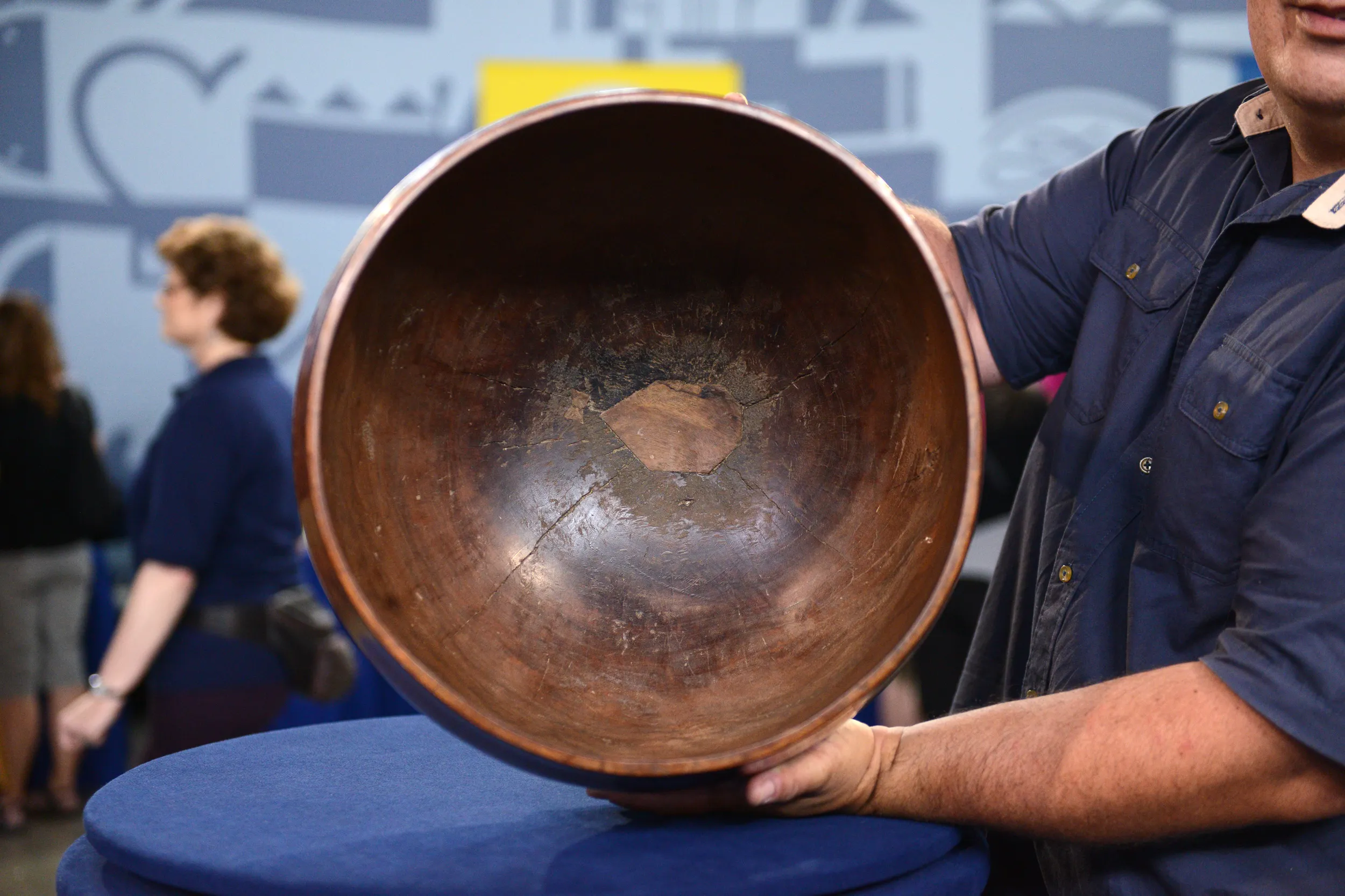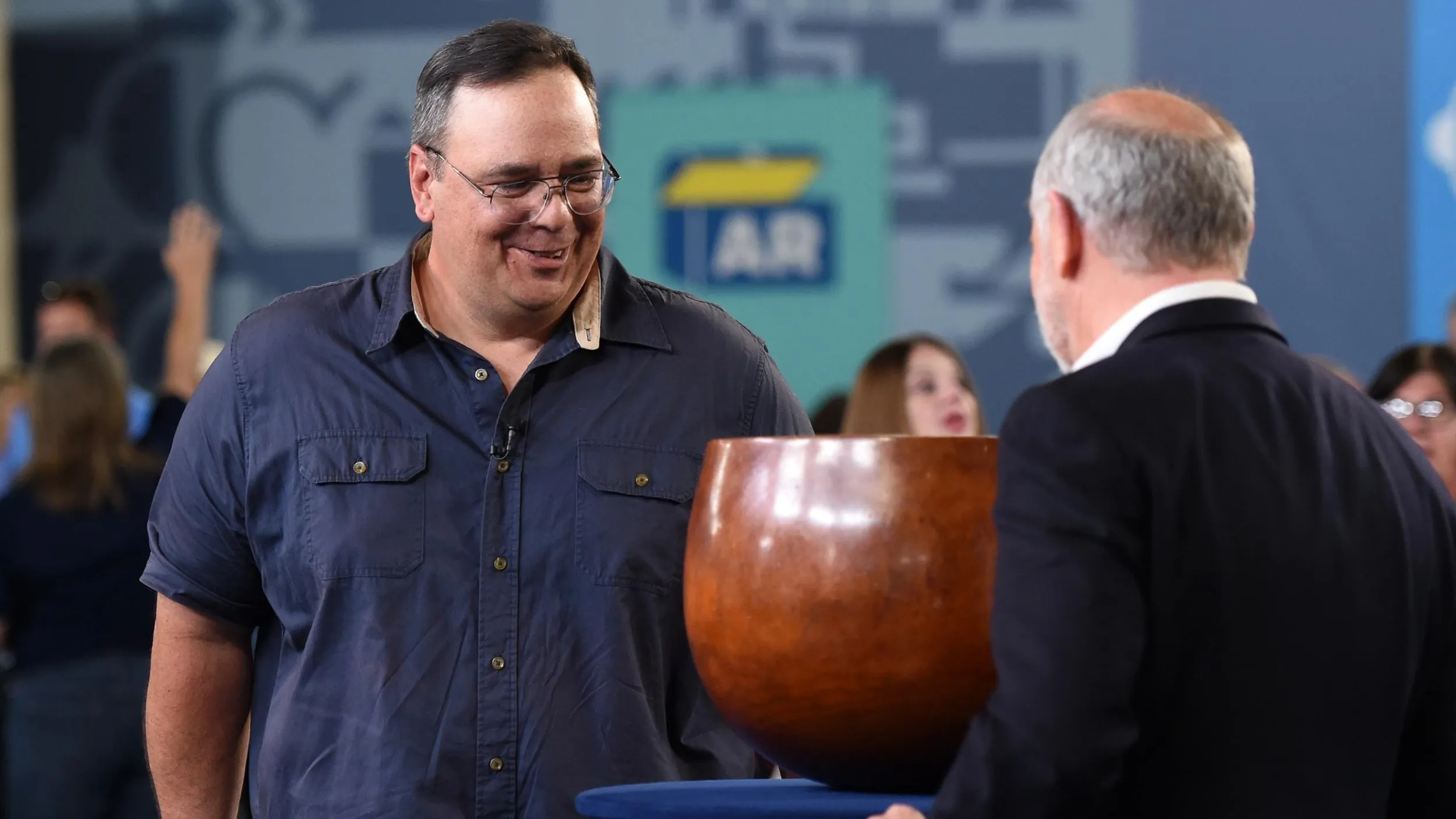GUEST: It's been passed down through my family, from my great-grandmother, grandmother, to my father, and then to me.
APPRAISER: And that was in Hawaii?
GUEST: Yes, in Hawaii. It's been used for quite a few things.
APPRAISER: Right.
GUEST: It was used to spin cats in, kittens, by my son. We also used to spin in it when we were little kids, I myself.
APPRAISER: Right.
GUEST: And it's been used in a robbery to carry stuff out, and they left it behind. And it's been used as collateral for a small loan between my mother and one of her friends. I guess it's been used for everything except what it was made for.
APPRAISER: And that, you think, is what?
GUEST: A poi bowl that you would eat out of at a big festival, a luau.
APPRAISER: Well, you're right, it is Hawaiian, and it is a poi bowl. It's made from kou wood, K-O -U, which almost went extinct in the middle of the 19th century. It has come back, but not in the sizes that would enable you to make these wonderful bowls today. I think the bowl dates from the beginning of the 19th century. This one doesn't have a very marked figuring on it, but it's a rather wonderful bowl, and it's above that magical 12 inches. When the bowls get above 12 inches, they really command a serious price. It's got some sort of surface nicks and dings, and I think that's probably due in part to the history of the bowl.
GUEST: Oh, yeah.
APPRAISER: I was looking inside, and I find that there is this repair on the bottom here. Sometimes, that might be the weakest part in the bowl that's sort of fractured over the years. Just off to the side there is a small butterfly-shaped repair called a peewah, and they're quite common on the bowls, which shows how much they are cared for-- that rather than throw them away when they get damaged, they really would like to fix them. Many of the repairs that you find on the Hawaiian bowls were actually done at the end of the 19th century, the turn of the century, and done by German, Austrian, and Japanese furniture makers. There are some which have ones that are almost signature repairs on them, and you can track them down. It's a beautifully designed bowl, the proportions are wonderful, it's hand carved…
GUEST: Yeah.
APPRAISER: Hand turned out, not on a lathe, and it's wonderful. As it just comes up a little bit here, it just turns out ever so slightly. So aesthetically, it's very, very beautiful indeed. I think a conservative retail value would be between $18,000 and $20,000 at this moment, and I think that's conservative. It's lovely; it's a great bowl.
GUEST: Thank you, thank you, it's got a long life yet.












